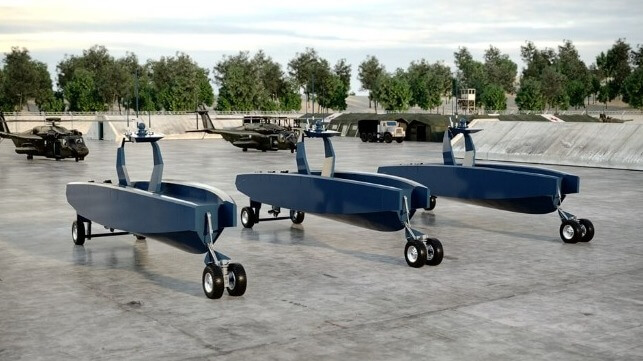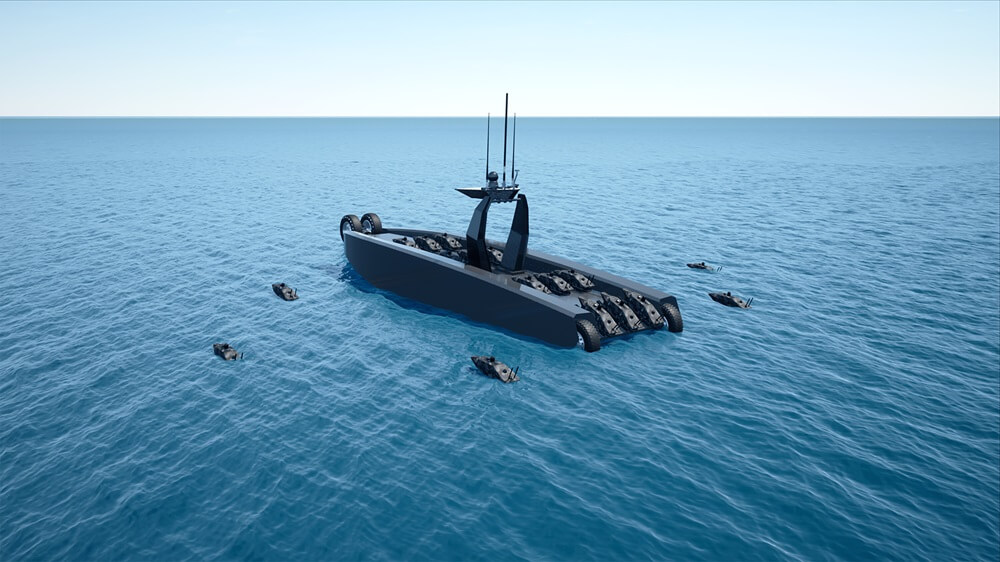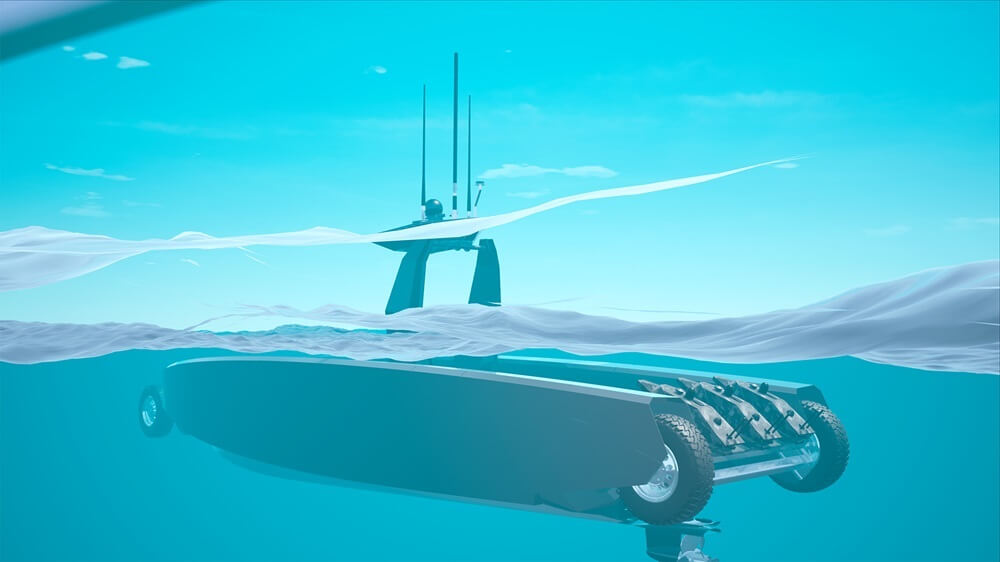Metal Shark Has a Drone Boat That Drives on Land and Loiters Underwater

The Pentagon is profoundly interested in small, attritable, unmanned solutions that can offset the sheer-mass advantage of America's potential adversaries, particularly in the maritime domain. Metal Shark has come up with a pair of vessel designs that can do it all: self-deploy from shore, operate semi-submerged, and deliver a swarm of micro-boats that don't cost much if they are lost in action.
Prowler, the larger of the two designs, is an amphibious boat with retractable wheels and an open back deck. It can self-launch and self-recover from a boat ramp or the well deck of an amphib without a trailer, and it can drive (slowly) into position on land with an electric motor drive. For longer towed transits over the road, it is its own trailer, with stern wheels down and DOT-approved tires.

 Courtesy Metal Shark
Courtesy Metal Shark
This 30-foot welded aluminum boat is intended to loiter for long periods in semi-submerged position, floating with just the mast and antennas above the water - much like a drug-runner's semisub. The air intake for the engine is on the mast, allowing it to keep running even though the hull is beneath the surface. For long ISR missions, it can run on a lithium-ion battery for an extended period, or on an optional generator.
Prowler is designed to carry up to 12 "micro-USV" miniature boats that can self-deploy on wheels off the larger boat's back deck. These smaller "Frenzy" drones are electrically propelled and are designed to be used up in action.
“There’s a huge need for attritable USVs in a compact form factor, and very few sources. Frenzy will serve this demand, and putting Frenzy onboard Prowler makes perfect sense. Pairing an over-the-horizon capable USV with micro-USVs delivers a one-two punch capability, keeping the key asset safe while allowing the attritable drones to do their job," says Metal Shark CEO Chris Allard.
The potential for unmanned surface vessels in naval applications has been growing for years, but has become even more obvious to defense planners after the lopsided success of Ukraine's drone boat program. Ukrainian bomb boat swarms have sunk multiple full-size warships of the Russian Black Sea Fleet, self-deploying over a distance of hundreds of nautical miles and successfully penetrating ships' defenses. The cost of these drones is low relative to the value of Russia's surface fleet, and individual units can be exposed to risks that would be unacceptable for manned vessels.
